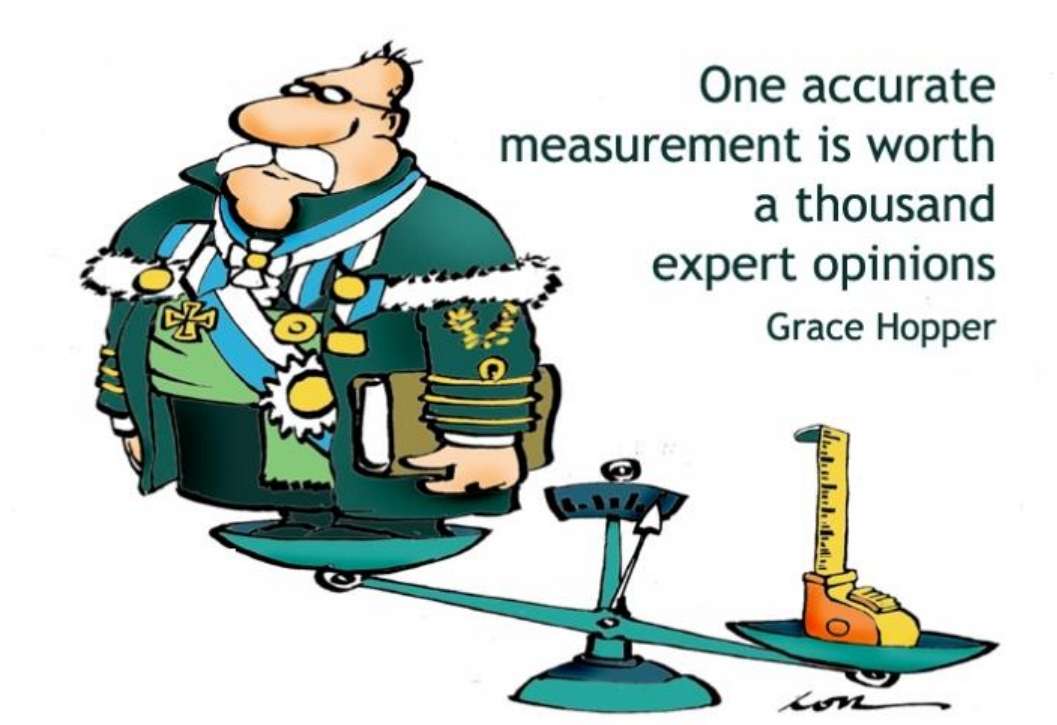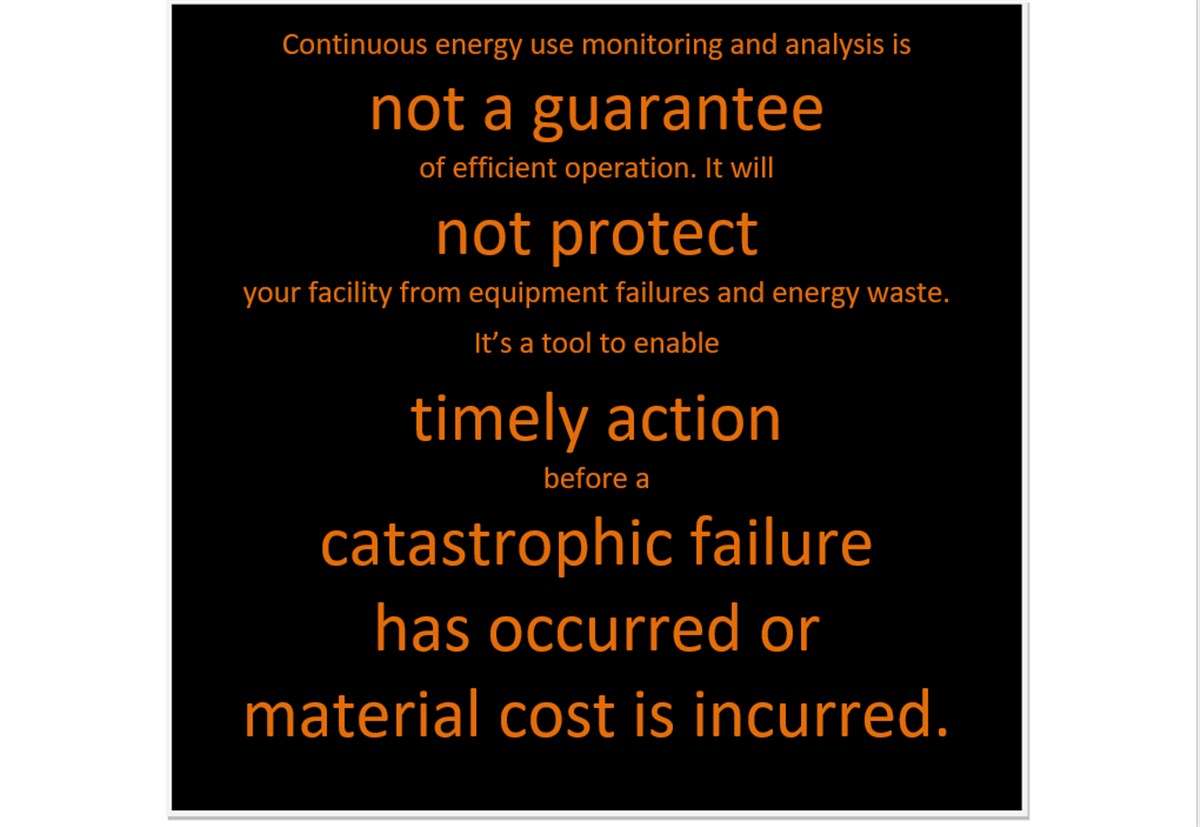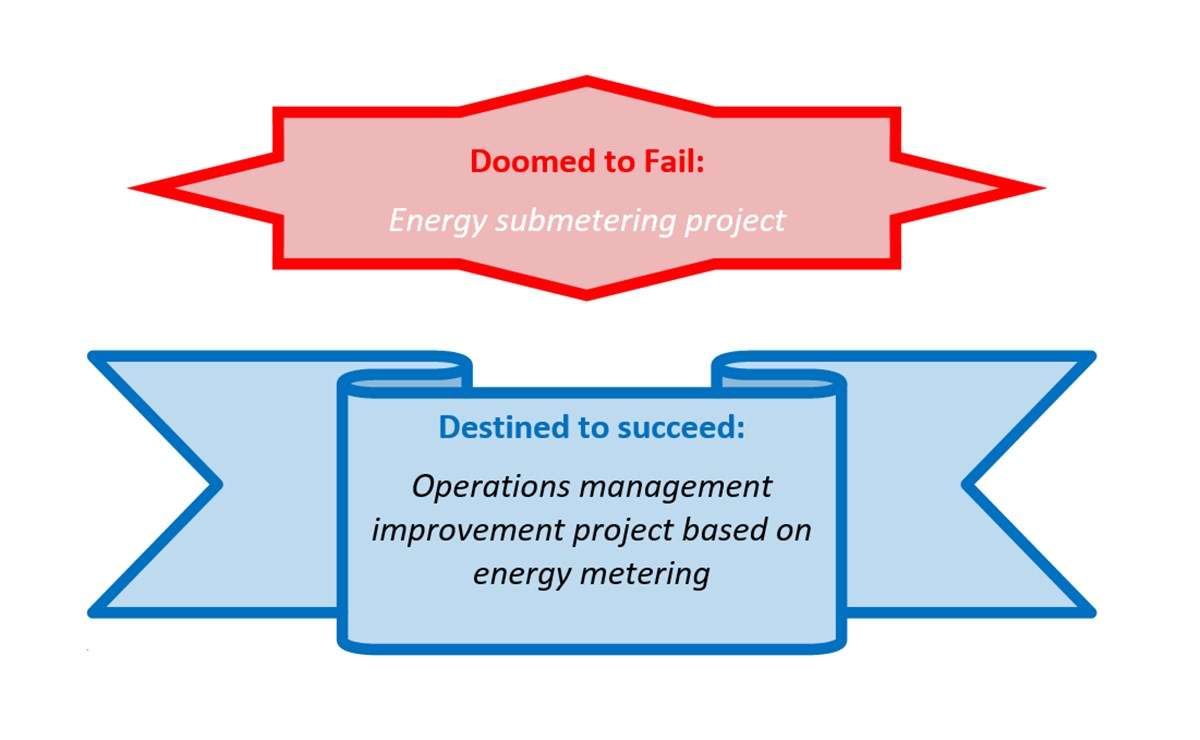1. In metering we trust :)
Data is only reliable if it has been collected through routine automatic metering, which has been validated.
All claims like ‘we always keep this operational schedule’, ‘compressor/boiler/light is off on weekend’ or ‘current never exceeds X Amp’, all of them have exactly zero value to energy use analysis.
At different projects I saw:
- a compressor labeled 30hp drawing 45kW, just because 10 years ago its motor has been replaced with a bigger one, but nobody cared to change a plate or any other record.
- three 5hp fans controlled by the same VFD draw 3 different currents, consistently. Came out blades were damaged on inner propeller on 2 out of 3 fans.
- a supposedly sequenced compressor to come online randomly due to incorrect suction pressure setting.
Opinions are great to keep conversation going. Metering is better for business.

2. Data has no value unless analysed
Metering has zero value to business unless collected data is analysed. Drawing graphs and dashboards, aka visualization, does NOT constitute analysis. It’s just another way to show data.
Megabytes save no megawatts.
3. Analysis is a comparison of actual numbers with expectations
Absolute value of metered numbers has no meaning. Results of metering must be compared with expected numbers derived from models or from experience. If I tell you that plane landed at 8.45, is it good or not? – Depends on plane schedule.
No model is perfect – ignore small fluctuations, but …
4. Watch for sustained deviation from expectation
To see if small variation sustains – use CUSUM to notice them: CUSUM stands for cumulative sum of differences between actual and expected value. Due to its ‘cumulative’ nature, CUSUM averages out random fluctuations, but accumulates sustained ones. Small deviations do not matter, unless they are sustained over time. It’s like small steering wheel adjustments do not matter, until for every two left adjustment driver makes only one right.
Remember that any statistical model is an approximation, it calculates mean value, which is subject to built-in uncertainty. (Rare client understands this, so keep it for internal quality control :) )
5. Check conclusions based on math against common sense.
Math is a tricky beast: it does not care about commons sense or input errors or typos. Garbage in – garbage out.
Watch for common sense before finalizing conclusions.







Leave A Comment